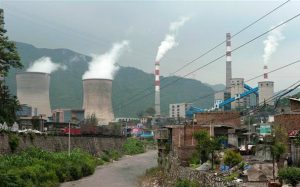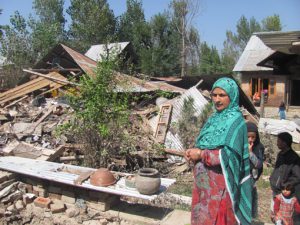China’s curbs on coal will be a net creator of jobs, a new study has found, responding to fears that heavily-industrialised provinces will experience migration and social unrest following a large-scale loss of jobs in mines, coal-fired power stations and steelmaking.
The study, which was authored by the China Coal Cap Project, is a joint initiative of academic, governmental and non-profit researchers and analyses the overall employment benefits of establishing a national coal cap policy in China’s 13th Five Year Plan, which runs from 2016-2020.
“If a national coal cap policy is implemented, the renewables, clean energy and energy efficiency industries will create many more new jobs than those lost in the traditional coal mining and coal-intensive industries,” said Pan Jiahua, director of the Chinese Academy of Social Sciences’ Institute for Urban and Environmental Studies. He added: “And most of the newly created jobs are decent jobs with better working environments and higher technical skills, to replace low quality unstable ones.”
Low-carbon energy would be the primary beneficiary of a coal cap, as the number of workers required to install new capacity and infrastructure in wind, solar, hydro, nuclear and biomass would outnumber the amount of jobs lost in coal mines, transportation and coal-fired power generation, the report said.
Millions more jobs would be created directly and indirectly in energy efficiency and energy services, the report added.
China Coal Cap Project added that many jobs will be lost in the coal sector anyway – with or without coal curbs – as smaller, less efficient mines close, miners are replaced with new machinery, and lower global coal prices and domestic oversupply all scupper plans for expansion.
However the report did not go into detail about how those who lose their jobs in the coal industry would find new opportunities in the low-carbon energy sector.
In China, many of the areas that mine and burn coal are far away from low carbon energy production and manufacturing, while the experience of US and UK suggests that in traditional coal mining areas, the economic and social costs of closures has been high and not enough well-paid jobs have taken their place.
Slow progress
China’s self-declared “war on pollution” has made slow progress in the past 12 months, as heavily-industrialised provinces surrounding major cities have been slow to shut down polluting power plants and factories and have pushed for greater funding from central government to cushion the blow of job losses.
But individual provinces such as Hebei are likely to come under increasing pressure to cut the use of coal soon, as the government will want to show real progress in its battle against pollution in its major cities in the wake of increasing public pressure for better air.
The recent ‘Under The Dome’ documentary was hugely popular, garnering hundreds of millions of clicks, while a string of central government targets is likely to mean that restrictions on coal-fired energy will be more strictly enforced than in the past.
China’s government has promised to cap coal consumption by 2020, reach a peak in carbon emissions by 2030 and continually decrease levels of carbon intensity and reduce coal’s share in the energy mix to 62% from the current 66%.







